
A data management maturity level is a good indicator of whether bad data practices are likely hindering business growth or at worse exposing your business to the risk of regulatory non-compliance.
At Unit of Measure we have developed a free self-assessment test to help you quickly get a sense of what your business is doing well and where there is room for improvement.
Use this test to take the temperature of your organisation's level of maturity.
It’s important to remember that business decisions based on data that is weak can directly impact profits and productivity. Not having a clear, data driven view of the business can obscure opportunities to drive revenue or slow the time it takes to shift direction and respond to changes in the market.
Many data challenges are common across all types of organisations, but we also know that each type of industry vertical has its own set of unique data challenges.
So, we have tailored the data maturity tests to specifically cater for different industries to present the most relevant set of questions. Click on any of the industry verticals below and directly start your test:
What happens next?
When you have completed the questions, you’ll automatically receive a score, along with a description of your level of maturity and some clear recommendations on how to address potential weaknesses and how to improve your competency.
By providing your email address we can instantly send you a summary of your test score, along with the summary of your data maturity level and recommendations.
Self-Assessment Test “FAQ”
If you are interested to learn more about how you can leverage your master data in STEP, reach out to us today for a consultation and assessment of your needs.
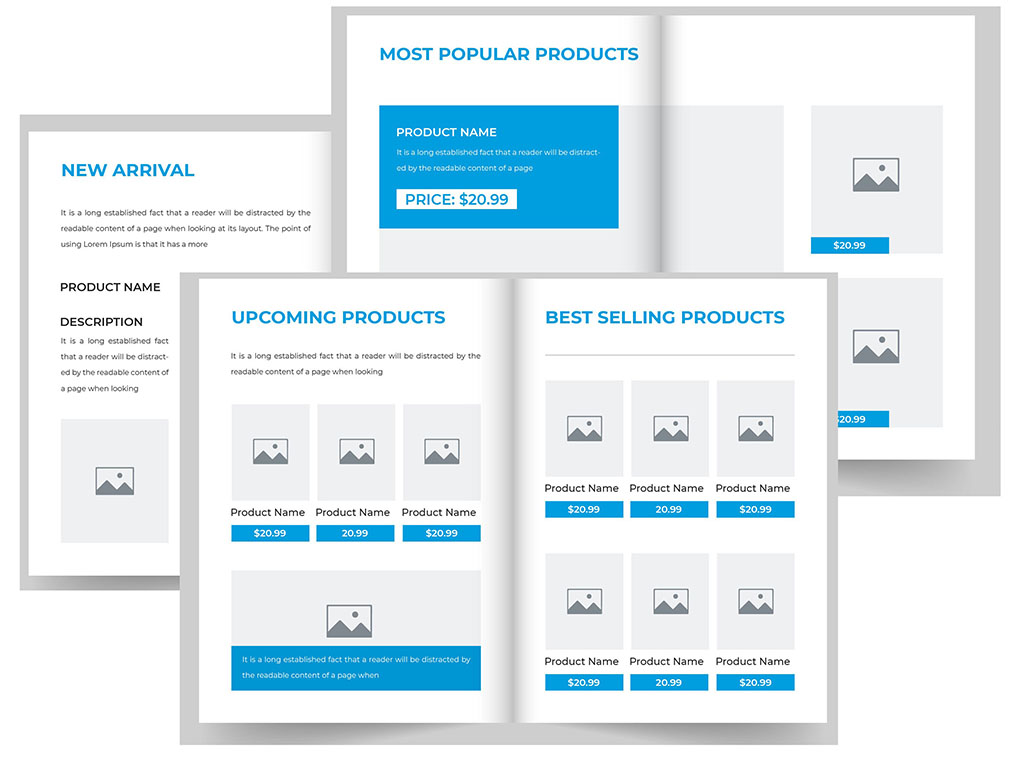
If your organisation sells products and has been around for a little while, chances are that you don’t have to remember too far back to when printed catalogues and brochures were once your main sales and marketing channel.
Chances are also that by now they have almost – if not fully – disappeared from your sales and marketing arsenal, replaced by a plethora of online channels and media. Even IKEA decided back in 2020 to retire after 70 years its printed catalogue, which at its peak was distributed in 200 million copies, in 69 different versions, 32 languages and to more than 50 markets.
When Stibo Systems launched the first versions of STEP (Stibo Systems Enterprise Platform) some 20+ years ago, it was designed to be a media-neutral repository for managing product information. And even in those early days it was a strong offering for any organisation who were looking for a platform to manage and achieve a single view of its master data.
But, in line with customer demand at the time, it was also one of the leading platforms for automating the production of printed catalogues – turning huge amounts of raw product data into catalogues spanning hundreds of pages. For the first few years of STEP’s existence, it was this feature that was one of the main differentiators and a big driver for Stibo Systems’ customers to select STEP – along with publishing the same data to the organisation’s web catalogue and other budding online channels.
Read more: How can retailers make product data accessible on channels their customers use?
As a side note, this was – as far as I remember – even before STEP was labelled a PIM (Product Information Management) or MDM (Master Data Management) system. The hot acronym at the time was Cross-Media Management & Publishing or CMMP (in hindsight, I’m happy that acronym didn’t stick). It was as if the word “publishing” was too closely connected to the production of printed matters, so when printed catalogues went out of style, so did this word.
While some organisations abandoned the printed catalogues completely and migrated to an online offering, many still saw the value of providing customers with what you could call the digital version of a printed page: PDF (Portable Document Format) documents.
Despite the ever-evolving digital media landscape, the PDF stands its ground as a robust medium. One of the main advantages it offers is the control over user experience. Unlike dynamic web interfaces that vary across devices and platforms, a PDF provides a consistent visual and informational experience. Be it intricate diagrams, detailed specification tables, or multi-page technical documents, the content in a PDF remains unaltered, presenting a unified image of the organisation's data.
In a Harvard Business Review article, Why Catalogs Are Making a Comeback, the author says about the printed catalogue:
… But their real power is how — for certain products — they increase the vividness of a product by enhancing consumer’s ability to visualize and imagine product usage experiences. Vividness is highly influential in consumer behavior as it can increase consumer involvement and joy in the purchasing process, ultimately influencing preferences and sales.
The author is likely attributing some of this vividness to the feeling of holding a physical copy of a printed catalogue in your hands, but the ability to flexibly combine product data with all the available design elements in a reliable format must not be underrated.

The PDF format was developed by Adobe in the 1990’s and it quickly became the standard format of exchanging documents across devices and platforms.
PDFs can be generated from a myriad of applications, but if you are looking for an application that allows you to control the look and feel of your document including design, typography, colours etc., you will not find any better choice than Adobe’s own InDesign application.
I still remember attending a big Adobe launch event in Copenhagen in 1999, when InDesign was introduced and within just a few years it was the market leader in the DTP (Desktop Publishing) space. With InDesign, Adobe managed to combine the full creative flexibility found in its rival QuarkXPress with the support for structured data that Adobe’s own application FrameMaker was known for. The combination of these elements made InDesign stand out and lent itself to import and processing of large data volumes while still preserving excellent control of the page layout.
With the later introduction of InDesign Server, Adobe went one step further and opened InDesign to suddenly make it possible to integrate InDesign to external databases and have this data being output to PDFs and laid out in any desired style based on predefined InDesign templates.
Read more: How to use Stibo STEP to unlock value in the CPG sector
Stibo Systems had several years of experience in integrating to DTP tools and were quick to realise that Adobe InDesign Server was a game-changer in the ability to combine creative freedom with print automation at scale. So, not long after, the STEP to Adobe InDesign Server integration was developed and became probably the strongest of its kind in the market.
How companies are using PDFs today
The decline of the printed catalogue meant that STEP’s strong support for the print/PDF medium was no longer one of the most sought-after features among new customers and it slid into the background, becoming more of a niche than a mainstream feature – especially in the marketing of the STEP platform.
Stibo Systems’ support for these features does however remain strong to this day and many of Stibo Systems’ customers are utilising the STEP-to-InDesign integration – although not necessarily to produce output that will end up on a piece of paper.
Most of the PDFs produced from STEP these days, end up as documents that website visitors can download to access more information about products.
Some of the typical use cases for PDFs produced from STEP are:
Technical Data Sheets
For businesses, especially in manufacturing and technology sectors, technical data sheets are indispensable. Integrating STEP with Adobe InDesign ensures that these documents are not just data-rich but also designed with precision, making them easy to read and comprehend. In many industries, technical customers like engineers and architects often rely on the level of technical detail and diagrams found in this type of document.
Compliance Documents
Documents like Declaration of Performance (DoP) or Declaration of Conformity (DoC) are critical for regulatory compliance. Having them generated from trusted data sources minimises the risk of errors and non-compliance.
Product Catalogues
For large distributors or manufacturers, product catalogues – printed on paper or not - can run into hundreds of pages. STEP’s ability to handle vast data ensures that such catalogues are not only accurate but are also aesthetically designed.
Layout driven catalogues
STEP even supports the production process of consumer catalogues that are characterised by a high emphasis of a spread by spread layout. This is often seen in retailer’s catalogues and certain types of B2B distributors within e.g. office supplies. With an optional Flatplanner component, customers can plan each spread by allocating which products to sell, their position and prominence on the page.
Read more: 3 Signs Your Business Needs Stibo STEP Master Data Management Solution
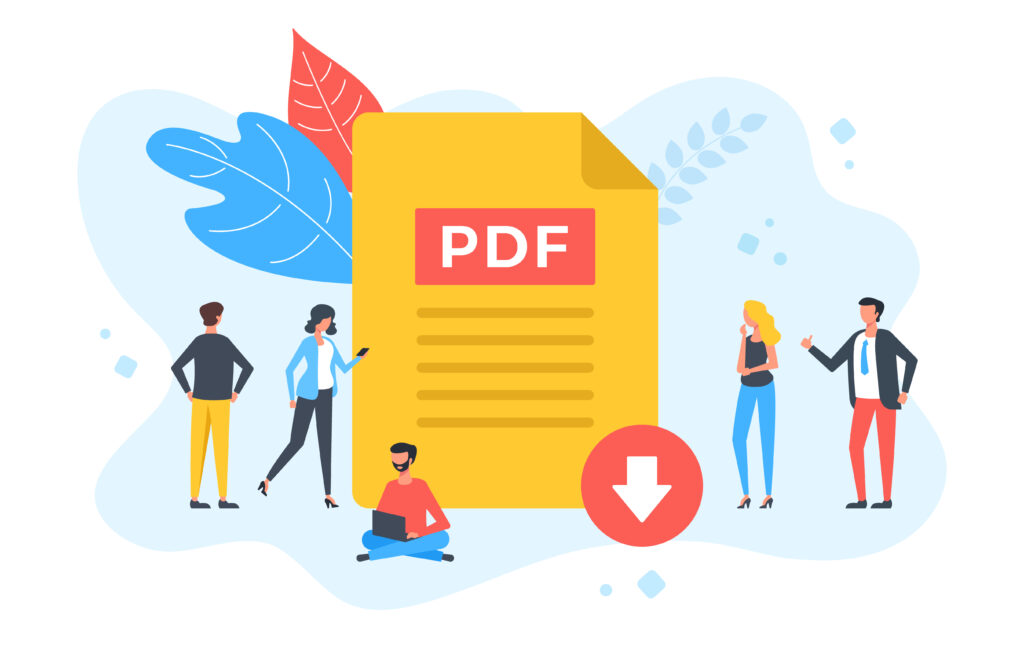
Automate to keep documents up-to-date
Back in the days of printed catalogues, the update cycle was quite clear. The printed catalogues were usually published once or twice per year and each publishing cycle was a project on its own. This meant that the contents of each page went through a review and update process to ensure that all the content was correct and up to date.
This project-based approach doesn’t really work when publishing content to online channels. These channels should be updated instantly, so whenever an update has taken place to a product and the change has been approved, the change should flow automatically to update any online channel where the content is published.
This can be a challenge for the content kept inside PDFs, because even though most integrations between STEP and e.g. web catalogues will publish the content to display on the web store pages, the integration will normally not consider that a new file will need to be generated to reflect the changes made to the product data inside a PDF like e.g. a technical data sheet.
In many cases this falls back to the Product Manager or other user responsible for the product content as a semi-manual task to ensure that new PDFs get generated and published to the website.
However, companies utilising STEP often grapple with a broad spectrum of product data, market variations, multiple language versions, and frequent data amendments. Herein lies the challenge: Keeping PDFs up to date amid the constant flux of information.
This is where Stibo Systems customers should consider taking their STEP to InDesign integration to the next level: Ensure that an automation is in place, which automatically detects when content inside a PDF has changed. This should trigger a process, which sends a request to Adobe InDesign Server to return an updated PDF (or maybe even several language versions). The PDF(s) will be automatically uploaded to STEP to replace the outdated version and subsequently published to the web to ensure that all changes are now reflected wherever the information is published.
This type of automation of the PDF publishing process can save hours of repetitive work for valuable knowledge workers, eliminate the risk of human errors and reduce the update cycle time for product data changes.
Read more: Use Stibo STEP to accelerate digital transformation in manufacturing
How to get started with PDF automation from STEP
The integration of STEP and Adobe InDesign, while seemingly technical, is a transformative tool in the hands of businesses that understand its potential. With the power to automate, customise, and present product data in a universally accessible format, organisations stand to gain both in operational efficiency and customer engagement.
But implementing such a solution does require specific skills that involve good knowledge of InDesign, STEP and the specific modules in STEP to connect the data in STEP with the layout requirements in InDesign.

At Unit of Measure we are experts in the configuration of Adobe InDesign and STEP. Our roots go back to the early days of STEP, when this integration was used by most STEP customers and we have continued to hone these skills over the years because the demand for PDF output from STEP never really disappeared – it just went a bit into the background.
If you are interested to learn more about how you can leverage your product data in STEP to produce PDFs and maybe even how the end-to-end production cycle can be fully automated, reach out to us today for a consultation and assessment of your needs.
We would like to introduce you to our new ROI calculator that we are presenting together with our good friends at Stibo Systems.
It’s designed to compare the estimated solution cost with the anticipated future benefits of investing into Master Data Management (MDM).
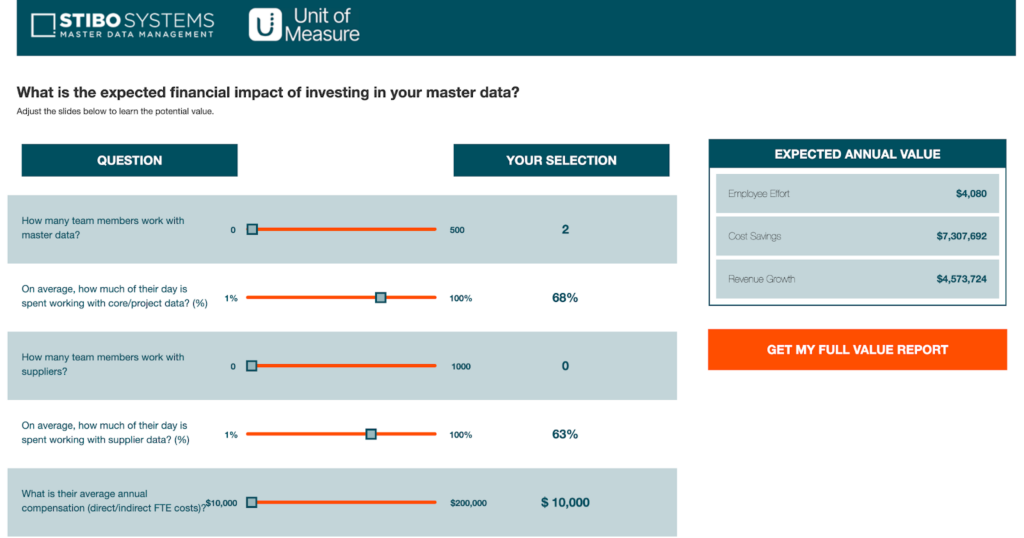
MDM or Master Data Management
An enterprise organisation typically uses an MDM tool such as STEP from Stibo Systems as a centralised repository, managing, updating and storing their master data, thus avoiding the costly inefficiencies caused by silos of data.
STEP (Stibo Systems Enterprise Platform) is the most comprehensive software solution for creating, managing, and publishing accurate and consistent master data across your business.
What is ROI, and what does it show?
The term ROI or Return on Investment describes spending money with the expectation that you’ll get a return on your expense. Businesses, especially in today’s tough economic marketplace don’t want to gamble when making a purchase, so breaking the numbers down into a ROI calculation provides a more accurate and defensible decision-making process.
How do you calculate your ROI?
ROI is normally presented as a percentage over an expected period of the investment, normally viewed as:
Return on investment (in %) = Net income / Investment * 100
A high ROI means the investment’s gains compare favourably to what it cost. As a performance measure, ROI is used to evaluate the efficiency of an investment or to make a comparison across the efficiencies of different investment options.
Read more: How to use Stibo STEP to unlock value in the CPG sector
Poor data is bad for business
MDM can quantifiably benefit a business by consistently making available and accessible for use information such as customer data, product details, suppliers, and creative assets.
Organisations around the globe are continually seeking ways to gain a competitive advantage by leveraging their data and the insights it provides to be able to work harder and smarter.
Not having an MDM system in place, can be the difference between missed opportunities, and regulatory non-compliance compared to future-proofing the data foundation for the organisation and reducing the risk of making bad business decisions.
Also see: Use Stibo STEP to accelerate digital transformation in manufacturing

Now you have an ROI how do you use it in your internal MDM selling process?
Most people buy for emotional reasons – a belief in the story behind the product or service and that it will provide as a minimum the benefits presented.
Providing a convincing ROI argument as to why your company should invest in an MDM system creates a logical purchasing position. Adding this to an explanation to how using an MDM system will take away some of the pain your company is trying to address, moves your approach for internally selling from a ‘nice to have’ to a necessity.
To get the ROI value, and then be able to combine it with the key benefits in monetary terms of investing in an MDM system, the value metrics need to be calculated.
So, we have taken away the hard work needed to make these complex calculations by working with Stibo Systems to develop a unique ROI calculator.
Use our ROI calculator - click here.
Trying to sell a solution internally by using ROI and presenting figures, means you need to keep it as simple as possible. If your audience doesn't understand it, they won’t be convinced by it.
If they find the concept of looking through your ROI calculation too difficult, they’ll defer a decision or say no.
Using the ROI methodology helps your stakeholders see the value you can deliver with an MDM solution. In fact, ROI based selling can reduce the sales cycle time drastically because they’ll want to start reaping the potential benefits immediately.
Having a well thought out ROI discussion can help also to reduce the value of the emotional ties to any existing solution and provide insights into any financial gains or returns that in the long term can reduce the level of resources required or upfront investment needed to manage the current status quo.
Read more: Tips on how to internally sell Master Data Management in your organisation
Unit of Measure - based on 20+ years of MDM experience
Wherever you are on your MDM journey, we can help you.
All our services revolve around helping organisations achieve great business benefits from Master Data Management (MDM) and Product Information Management (PIM).
Based on over 20 years of MDM and PIM experience, we have developed our own unique implementation approach that achieves the fastest time-to-value for your investment, with a low risk of project delays and with a high project success rate.
Book a free consultation with us and let’s explore how we can help you get your master data in shape and prepared for the changes that will be impacting businesses now and in the coming years.
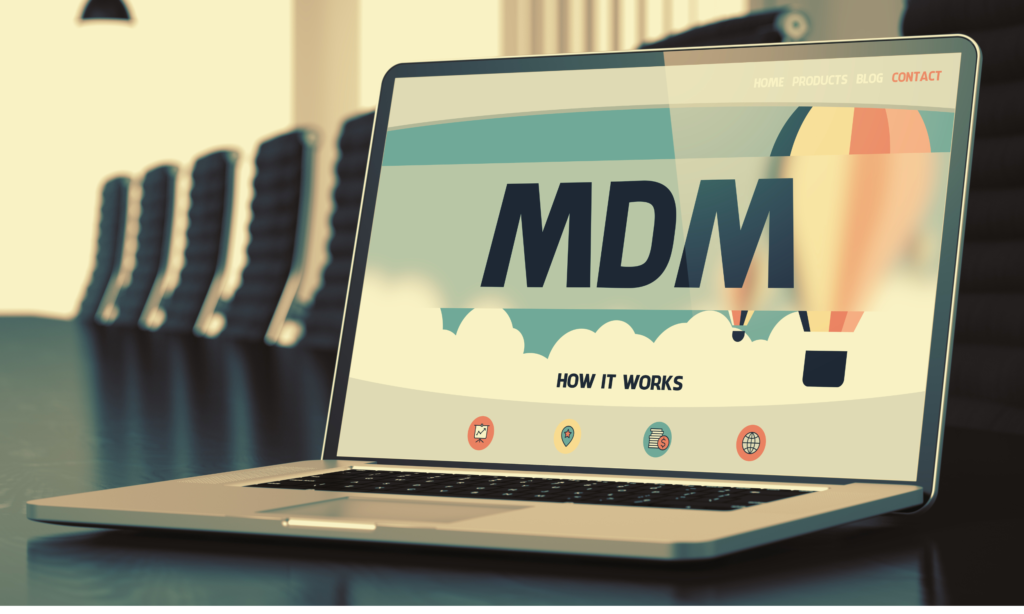
Investing in a Master Data Management (MDM) solution is not necessarily an easy sell to everyone in a business, large or small. The investment is not only monetary, but also in the organisation itself, with an allocation of key personnel and strategic priorities needed to effectively manage MDM projects.
One of the deciding factors for selecting an MDM system is that bad data is bad for business. However, business leaders are often oblivious to how poor quality data undermines their company’s performance or if they are aware they don’t know who is taking responsibility to address the issue.
Business decisions based on insights or analysis that are weak can directly impact profits and productivity. Not having a clear view of the business can obscure opportunities to drive revenue or take the appropriate actions to reduce costs.
Plus, if your end-customers feel through their interactions with your business that you don’t really understand their needs or wants, it can erode loyalty, slow the pace of expansion, and introduce an element of risk into your operation.
Also see: Use Stibo STEP to accelerate digital transformation in manufacturing
Ultimately not having an MDM system in place, can lead to poor data quality, missed opportunities, and perhaps even regulatory non-compliance.
At this moment of time with the global economy facing various stresses and strains, smart organisations are seeking ways to gain a competitive advantage by leveraging their data and the insights it provides.
MDM can quantifiably benefit a business by making information such as customer data, product details, suppliers, and creative assets to be consistently accurate, and accessible at the time they are needed.
What is Master Data Management (MDM)?
MDM processes, policies and technologies, maintain an organisation’s most critical data assets (known as master data) as a single source of truth, used in multiple applications and systems across an enterprise.
An enterprise organisation typically uses an MDM tool such as STEP from Stibo Systems as a centralised repository, managing, updating and storing their master data, thus avoiding the costly inefficiencies caused by silos of data.
STEP (Stibo Systems Total Enterprise Platform) is the most comprehensive software solution for creating, managing, and publishing accurate and consistent master data across your business.
Investing in an MDM system should be regarded as building a foundation on which many other business initiatives will rely upon in the future, with more informed decisions made based on trustworthy data.
A master data foundation refers to the underlying infrastructure and systems that support the collection, storage, governance and management of master data within an organisation.
What are the benefits of an MDM system?
An MDM system will help data accuracy, reduce data redundancy, and improve data quality, all of which can be leveraged to derive more value from the data for the business.
And besides from future-proofing the data foundation for the organisation, there are some immediate benefits that can be achieved with MDM when presenting your internal sales case.
An MDM system helps organisations comply with data privacy regulations, such as the GDPR (General Data Protection Regulation), and reduces the risk of data breaches and security incidents through improved governance.
With a comprehensive view of business data, organisations can gain deeper insights into their own operations and with better data quality reduce the risk of making bad decisions.
And with a single source of truth for business data, organisations can reduce manual data entry from different sources and increase overall operational efficiency.
Read more: How to use Stibo STEP to unlock value in the CPG sector

So, how do you go about selling an MDM solution internally?
To sell the idea of investing in a Master Data Management (MDM) solution internally, you should focus on demonstrating its value and potential ROI for the organisation. Here are some steps to build a persuasive case:
Identify pain points
Begin by identifying the organisation's data-related challenges, such as data inconsistencies, data silos, slow decision-making, or compliance issues. Show how an MDM solution can address these problems.
Present the benefits
Clearly outline the benefits of MDM, such as improved data quality, streamlined operations, better decision-making, enhanced collaboration, regulatory compliance, and increased efficiency.
Quantify the ROI
If possible, quantify the potential ROI by estimating cost savings, revenue growth, or other financial gains that can be achieved through improved data management. Provide case studies or industry benchmarks to support your claims.
Highlight success stories
Share examples of other organisations in your industry or with similar challenges that have successfully implemented MDM solutions and reaped the benefits. This can help demonstrate the potential value of the investment.
Address concerns
Be prepared to address potential objections, such as cost, implementation timeline, or disruption to current processes. Offer solutions or mitigations, and emphasise the long-term benefits of MDM.
Engage stakeholders
Involve key stakeholders from various departments, such as IT, finance, marketing, and operations, in the discussion. Their buy-in and support will be crucial for a successful implementation.
Develop a roadmap
Present a phased implementation plan that outlines the steps needed to deploy the MDM solution, from selecting a vendor to user training and ongoing maintenance. This helps to provide a clear vision and timeline for the project.
Emphasise scalability and flexibility
Highlight the MDM solution's ability to grow and adapt with the organisation, ensuring that it remains a valuable investment in the long term.
Offer a pilot project
Propose a pilot project to demonstrate the effectiveness of the MDM solution in addressing specific pain points. This can provide tangible evidence of the solution's value and build confidence in the investment.
Secure executive sponsorship
Gaining support from top-level management is crucial for securing resources and ensuring the success of the MDM initiative. Present your case convincingly to executives and emphasise the strategic value of MDM for the organisation's future growth.
Unit of Measure - based on 20+ years of MDM experience
Wherever you are on your MDM journey, we can help you.
All our services revolve around helping organisations achieve great business benefits from Master Data Management (MDM) and Product Information Management (PIM).
Based on over 20 years of MDM and PIM experience, we have developed our own unique implementation approach that achieves the fastest time-to-value for your investment, with a low risk of project delays and with a high project success rate.
Book a free consultation with us and let’s explore how we can help you get your master data in shape and prepared for the changes that will be impacting businesses now and in the coming years.

Mulesoft recently published their 8th annual “Connectivity Benchmark Report”. The report reveals that organisations with at least 1,000 employees now have an average of 1,061 applications in operation.
A mind-boggling number considering the number of resources required to run and maintain a single application.
Why are we running so many applications?
There is obviously not (yet) a single application that can support the full set of company requirements in their entirety. So, businesses will need to run several different applications to manage the wide variety of processes company-wide.
But as companies grow, expand and develop, so will the number of applications that they use. Large companies normally have multiple strategic programmes and projects running at any one point in time and each of these are often tied to software applications that are driving the new improvements and initiatives.
For each new process or initiative that requires some degree of support from software, a company will naturally ask itself, whether this can be achieved with existing applications, or whether a new application should be onboarded. While many would prefer to expand existing applications in theory, this is not always so easy.
Read more: Use Stibo STEP to accelerate digital transformation in manufacturing
Prioritising stakeholder needs
There can be many dependencies and considerations for the existing functionality of an application and there could even be conflicting interests between the current stakeholders of the existing application and the stakeholders of the new initiative. The new project would likely need to “get in line” to get their wishes fulfilled in the existing application, which probably has a priority list of its own.
So, introducing a new application in the organisation instead of expanding an existing application could often seem like the fastest and easiest solution.
And who doesn’t like fast and easy solutions? Especially since the organisation already runs so many other applications, it wouldn’t hurt to introduce just one more, would it?
Adding to that logic, who cares if there’s an overlap of data in our new application compared to other existing applications. It’s used for different purposes anyway and maintained by different people, so what’s the problem?

The IT impact of mergers & acquisitions
Another source of new applications to the IT landscape comes when the company merges or acquires other companies. Aligning the IT landscape of two different companies is a massive task and will likely add to the growing number of applications that it’s managing.
So, over time, a typical scenario would be for a company to have a line of applications stacked up, and slowly, but surely increase the overhead spent on software licences, hosting, solution maintenance, support, double data maintenance, etc.
According to the report from Mulesoft only 29% of the applications in the surveyed companies had any kind of integration to other systems.
In other words, a lot of the data in an organisation lives in silos and data is therefore duplicated and maintained in every application wherever the same entity appears.
So, a normal large operation could be running maybe 1000+ applications with most of them running without integration to other systems, it’s not hard to imagine that there is a large potential to consolidate applications to reduce direct and hidden costs in the organisation.
But the misery of having too many redundant applications doesn’t even stop there. Managing company data in silos running in applications – each optimised for a specific scope and purpose – has another major drawback.
Organisations also lose out on the data insights that can be gained by having all information about products, customers and other master data domains gathered together in a single location.
Read more: CEOs should consider MDM to help address their top concerns for the next 10 years
IT infrastructure consolidation with STEP from Stibo Systems
Companies that find themselves in a position with multiple applications and too many silos of data in the organisation should take a look at Master Data Management (MDM). The core principle of MDM is to establish a single record of all data objects in the organisation and then to share this information with relevant applications.
There are several MDM software tools available, but we prefer STEP from Stibo Systems. Companies implementing Stibo STEP will often find that they can decommission several legacy applications in their IT landscape as part of the consolidation of master data on a single platform.
This is because STEP provides a centralised platform for managing all master data, which often enables the company using STEP to retire multiple legacy applications that were previously used to manage data across different departments and data domains.
STEP is a very open and scalable platform and comes with a broad set of API’s as well as standard connectors to other popular enterprise software applications.
Read more: 3 Signs Your Business Needs Stibo STEP Master Data Management Solution
Legacy applications can be costly to maintain, and they often require significant resources to keep them up and running. Sooner or later, they will also become desupported which could introduce an operational risk for the organisation.
By consolidating master data onto a single platform like STEP, companies can streamline their operations, reduce costs, and improve data quality and accuracy.
In addition to reducing the number of legacy applications needed, implementing STEP can also help to reduce data duplication and inconsistencies.
With a single source of truth for master data, businesses can ensure that all departments and systems are using the same data, which can help to improve overall business efficiency and decision-making.
Overall, implementing a Stibo STEP MDM system can help businesses to modernise their data management practices and eliminate the inefficiencies associated with legacy systems.
Unit of Measure is 100% STEP focused - a Stibo Systems Partner
With more than 20 years of experience in implementing STEP for businesses across the globe our single focus is on making STEP the key to your success.
Book a free consultation with us and let’s together explore how we can help you consolidate your IT landscape with STEP.
Read more: 7 ways To Advance Your Business with Stibo STEP Workflows

Facebook changed their name to Meta Platforms in 2021 to underscore its focus on the Metaverse, investing $100+ billions of dollars in preparing for the next big wave. Their investment in the Metaverse in 2023 alone will amount to almost $20 billion.
According to Forbes by 2024, the metaverse is predicted to grow into a $783.3 billion market, presenting both opportunities and challenges for organisations and how they address a new customer engagement strategy.
A new channel to reach your target audience
Futurists predict that the Metaverse will become mainstream within just a few years and in a recent report by Copenhagen Institute for Future Studies, 72 Metaverse experts predict that by 2030 the average consumer will spend 5.6 hours per day in the Metaverse and that having a presence in the Metaverse will be just as important as having a homepage for commercial brands.

If you think this sounds like a stretch, just think back to 1989 (if you’re old enough to remember). That year the blockbuster movie “Back to the Future Part II” was released.
The movie made a series of technological predictions about the year 2015: Video conferencing on flat screen monitors, tablets, mobile payments, video glasses, waste fueled cars and much more (we will forgive them for still having phone booths in the movie).
To most of the movie goers in 1989, these were all just entertaining gimmicks that served as a backdrop to Marty McFly’s wild adventures across space and time.
But unbeknownst to most of these movie goers, the Internet would become mainstream just a few years later, changing the World and paving the way for many of these implausible gadgets.
According to Forrester and their State of the Metaverse report, there are opportunities across all industry sectors to build out Metaverse capabilities. While early adoption among consumers is likely to come from gamers and those who are active on social media platforms, mainstream adoption will be following soon after.
It’s not yet clear what shape or form the Metaverse will take once it transcends from the gaming world into more mainstream areas and it might be difficult to figure out what to believe and where to start, but what if we boiled it down to this:
Within the next few years, browsing the Internet will become a whole new experience and online consumer behavior and engagement will change radically. Companies who are prepared for this could win big and companies still kicking tires could be left in the dust.

An omnichannel marketing experience
Brands globally continue to focus on how to provide their end-consumers with a seamless and consistent customer experience across multiple touchpoints and channels.
Today omnichannel encompasses in-store, online, web, mobile, email, social media, and more. The Metaverse adds to the capabilities of an organisation to reach consumers by taking them into a world of immersive experiences, across virtual reality (VR) and augmented reality (AR).
People (customers/consumers) will be able to engage with digital content in completely new ways. They will visit your digital store - within the Metaverse or not - and will expect that they can get an immersive experience of trying your products before they buy.
“Does my ass look big in these jeans?” or “Would that sofa fit in our living room and how would it look?” are questions that some online retailers are already trying to address, but expect that this will spread to many more areas and types of products and become increasingly more sophisticated.
Maybe they will expect that they can easily - maybe even visually - follow your products’ journey from origin and through the production processes and supply chain to make sure it's climate-friendly and sustainable.
But how should companies prepare for these imminent changes?
If you look under the hood of all the exciting technologies that will make up the front-end of the Metaverse, there is a big need for a very strong master data foundation.
What is a master data foundation?
A master data foundation refers to the underlying infrastructure and systems that support the collection, storage, and management of master data within an organisation.
It brings together all the various technologies, processes, and policies that ensure the accuracy, completeness, and accessibility of data, as well as the governance and security measures in place to protect the data.
A solid master data foundation enables an organisation to leverage their data assets effectively, and make informed business decisions based on data-driven insights.
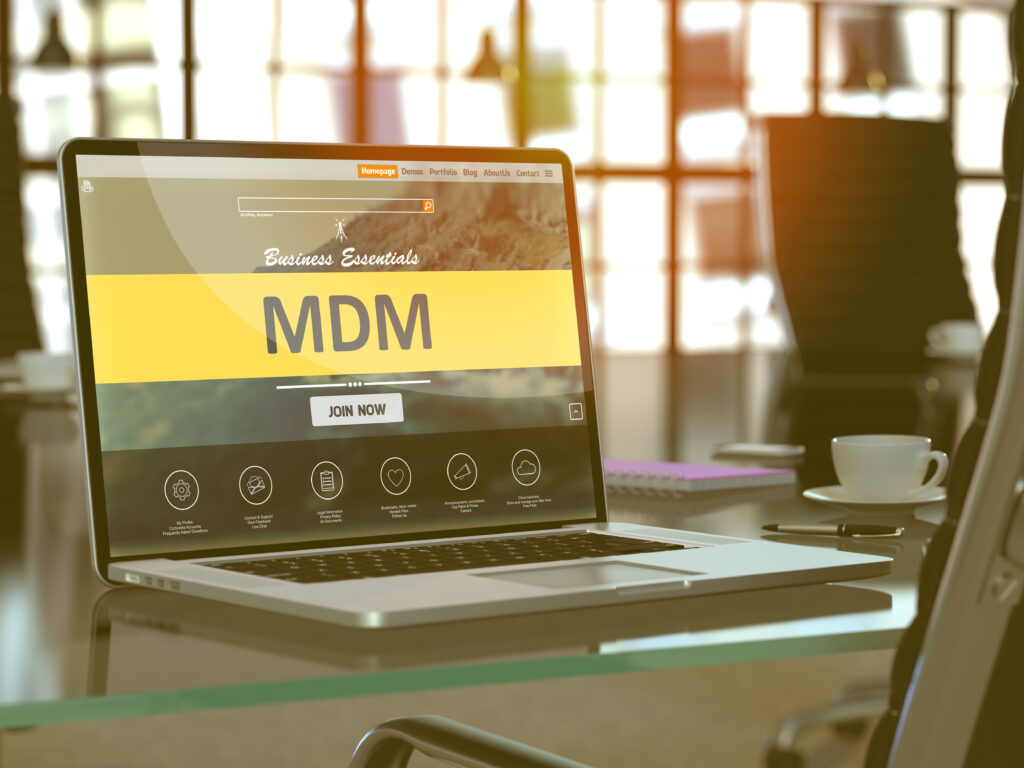
The role of Master Data Management (MDM)
Most large companies have invested in Master Data Management (MDM) solutions in recent years to achieve a single source of truth about their products, customers etc. This is an imperative in today’s fast moving 24/7 world.
But are the MDM implementations of today ready for the next wave of requirements for supporting immersive experiences for customers?
Each implementation of an MDM system was made with whatever the requirements at the time were. That’s fair enough, because the investment addresses those immediate pains of not having access to good data in the organisation.
But, maybe now is the time to focus five to seven years ahead into the future. Creating a vision of how your company will be ready to welcome customers that interact with your company in the Metaverse.
If the goal is for customers to be able to simulate use of your products in their own environment under many different conditions, what types of data and references to other data objects would your Master Data Management system need to have implemented by then?
Would you need to introduce new data objects in your data model and integrate new sources in order to prepare your company for these new requirements? How many data points would need to be available in the back-end for a fully immersive digital interaction with each of your products?

How can STEP help?
If you believe in the experts’ predictions for 2030 or if you just believe that the requirements for the data you will be expected to deliver will continue to grow, now is the best time to get ready for the future.
If you run your MDM solution on Stibo STEP from Stibo Systems, you should be well covered for what is to come. This is a highly scalable master data platform that is based on configuration rather than coding, which means that it is very easy to extend the data model to support new data types and even complex relationships between objects.
Several of Stibo’s customers selling highly configurable products are already using the platform to support complex configuration engines that allow their customers to simulate their use of the products in order to find just the right combination of products for their project.
These types of configuration engines will likely become common in order to support the multitude of ways and variations that customers are likely to engage with your products in the Metaverse.
At Unit of Measure we have 20+ years of experience in helping organisations maximise their investment in the Stibo STEP master data platform.
If you are interested in learning more about how you can prepare your organisation’s master data for the future, please book a free discovery meeting.

The headline from PwC’s 26th Annual Global CEO Survey says business leaders fear a dramatic fall in economic growth and expect the need to transform or die in the next decade.
The PwC global CEO Survey summarises the responses from 4,000+ CEOs from 105 countries about their views on the current situation of their company and their expectations for the coming years.
PwC Annual Global CEO Survey
The objective of the PwC survey is to identify key trends and patterns in the global economy that affect important management decision-making by leaders of the business establishment.
The survey makes for stark reading, as it reveals the downbeat view of CEOs on their own company’s growth prospects, which has dropped to the lowest level since the financial crisis of 2008.
When asked the question: “If your company continues running on its current path, for how long do you think your business will be economically viable?” almost 40 percent responded “10 years or less”.
In other words, four out of 10 CEOs expect that the next few years will bring changes so impactful in their industry that it will threaten the company’s existence if they don’t adapt.
PwC is not alone in painting this dark picture. EY (Ernst & Young) released their own CEO 2023 Outlook Study which also showed that the majority of CEOs fear recession will be worse than the financial crisis.
The EY survey, which recorded the views of 1,200 CEOs across the globe, found that 48% foresee a moderate slowdown in the global economy, while more than half (55%) of those preparing for a persistent downturn fear a recession worse than the global financial crisis of 2007-08 in terms of its length and severity.
What are the factors that will affect ongoing business performance?
When PwC asks about which factors CEO’s believe will impact their company’s profitability in the next 10 years, the top concerns were:
So let’s look a bit closer at these points for a moment.
Changing customer preferences
As consumption trends and customer preferences change, it has a direct impact on the purchase behaviour for certain products or services.
As a business, adjusting rapidly to these changes can require shorter product life cycles and more product variations, potentially requiring new research and development efforts, as well as changes to marketing and sales strategies.
Along with changes in customer preferences, there may also be a shift in terms of how an end-customer wants to purchase products or services. For example, customers are moving away from physical stores (bricks and mortar) to online marketplaces, or they may prefer to purchase products through subscription services (Direct to Consumer) or social media platforms.
With a 24/7 always on digital world, customers can always tap the internet to review, research and assess prospective purchases. That means customers may be gradually changing how they want to interact with businesses before, during and after a purchase.
Companies need therefore to adjust their communication protocols to match these preferences, potentially requiring changes to customer service processes, technology infrastructure and taking on an omnichannel approach to customer touch-points.
Regulatory change
Authorities are putting companies and their products under increased scrutiny and regulatory enforcement.
Many companies are working hard to comply with current regulations, and to stay on top of this will require a whole new approach to data collection and documentation through-out their products’ value chain.
One area of regulation that continues to expand and has business leaders worried is sustainability and the environment. As a result, CEOs need to further incorporate sustainability and social responsibility into their company culture. Failing to address these concerns could lead to a loss of customers and reputational damage.
What has changed in the minds of end-consumers is that they are willing to pay more for products with green credentials. So, as well as brand owners making public commitments regarding their green goals businesses need to show their commitment in response to the increase in regulatory and stakeholder pressure.
Skills shortages
Most companies have already experienced problems with finding and retaining the right applicants with highly desirable skills over the last few years, causing a hot job market for certain profiles and skillsets.
Without the right resources in place it will become increasingly difficult for businesses to grow and develop. And with a limited pool of qualified workers, the demand for their skills will only increase, driving up labour costs and the competition to keep and attract applicants. This could affect the ability to maintain profitability and may require adjustments to budgets and pricing strategies.
The current downturn in the economy in 2023 may soften this blow a bit, but the long-term trend is clear. Companies will struggle to recruit enough hands/heads to support the required company transformations.
Companies will need to work smarter and find ways to automate mundane tasks to get more done with less, proactively investing in upskilling and reskilling to stay ahead of the recruitment curve, especially when it comes to new technologies and emerging skills.
Technology disruption
We are on the brink of a major shift where Artificial Intelligence (AI) and Machine Learning (ML) and other related technologies will disrupt entire industries.
The cost and risk of lagging behind in adopting these technologies might be higher than for those organisations that ignored the Internet in the mid-90’s.
The Internet revolution was slowed down by the need for major shifts in consumer behaviour and lack of high-speed internet infrastructure. But the biggest impacts of the AI and ML revolution might first be seen inside a company and their adoption speed does not seem to have that kind of speed bumps in their way.
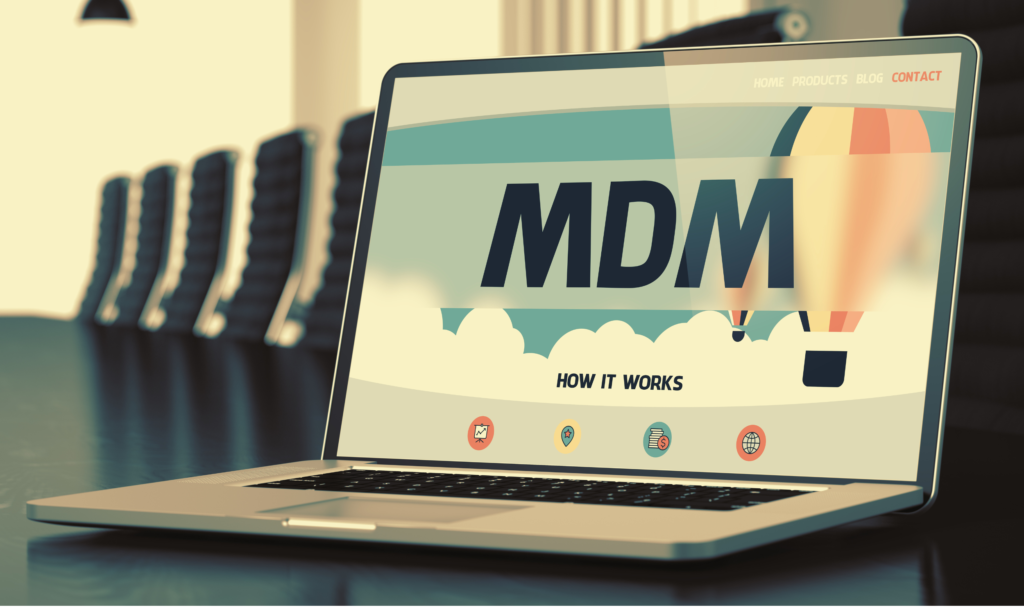
Is Master Data Management (MDM) the answer?
When I read the PwC CEO report, I must admit that I was looking at the issues through a Master Data Management lens, because it's a tool that can from experience make a difference.
And the theme of these issues is clear to me: Good data and the ability to process data efficiently is a prerequisite to address these challenges and achieve the agility necessary to respond fast enough to these changes.
Companies must establish a lean IT infrastructure, a solid master data foundation and streamlined business processes, defined by a high degree of automation, speed and high capacity through-put.
Companies will undoubtedly need to do other things as well, but these elements create a solid foundation on which a company can launch the necessary initiatives without getting blocked or held back by a lack of proper data and an unresponsive organisation paralyzed by legacy IT applications defined by technical debt and siloed business processes.
The Stibo STEP Master Data Management platform can help you achieve these goals and at Unit of Measure we have the know-how and experience to successfully implement STEP in your organisation.
Book a free consultation with us and let's explore how we can help you get your master data in shape and prepared for the changes waiting by the gate.